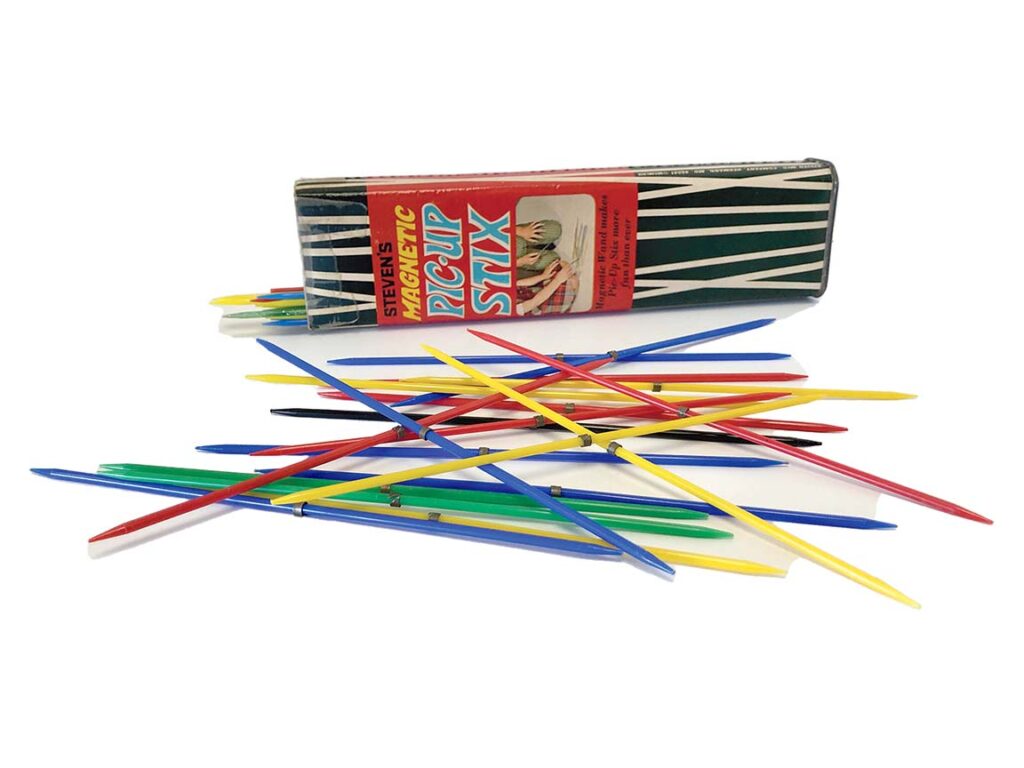
Dorri Partain
Contributor
Five, six, pick up sticks!
As children have been picking up and playing with sticks for centuries, it was only a matter of time before manufacturers would begin shaping sticks and packaging them as a game of skill and strategy.
The simple rules of releasing the pile of colored sticks into a random pile to be picked carefully as players take turns meant the game could be played by all ages and multiple players.
Depending on the manufacturer, the sticks, tapered at each end, could vary in length and be made from a variety of materials: bone, wood, ivory, bamboo, and eventually plastic. The game could be scored by the number of sticks collected, or by the points assigned to each color of stick, so each package would have an odd number of sticks to prevent a tie.
The Steven Manufacturing Company introduced their Pixie Pick Up Sticks in 1951. The company was founded in St. Louis in 1943 to manufacture kaleidoscopes by Roscoe Zemelman (1905-1956) who created the first model for his son Steven, for whom the company was named.
New toys were added to the line every year as well as new types of kaleidoscopes. By 1955, the company offered boomerangs, gyroscopes, pinball games, weaving loom sets, and a new magnetic pick up stick game.
Industrial engineer Bev W. Taylor (1924-2005) joined the company, then purchased it in 1960. In 1963, he moved the factory to Hermann, Missouri, taking over the International Shoe Company factory at 224 E. 4th St. Another division of his company, Handi-Pac, produced the packaging for the toys as well as for other local products.
Packaged as product #449, Steven’s Magnetic Pic-Up Sticks contained 25 plastic sticks and a magnetic wand. Each stick was wrapped with a metal band that the wand’s magnetic tip could attract to. The package notes the scoring as follows: plain (black)- 20 points, blue- 6 points, green- 4 points, red- 10 points, and yellow- 2 points. Players could also score additional points by picking up colors in succession.
The 1993 Missouri River flood hit the town of Hermann badly and destroyed many businesses, including Stevens Manufacturing, with toys floating in the flood waters that took over the town. The following year, the factory moved to 104 Industrial Drive and toy production resumed.
Following Taylor’s death in 2005, the factory closed and is currently listed as vacant and for lease. The price on the bottom of the game’s package was 59 cents and the copyright for the design was dated MCMLXIX (1969).
















